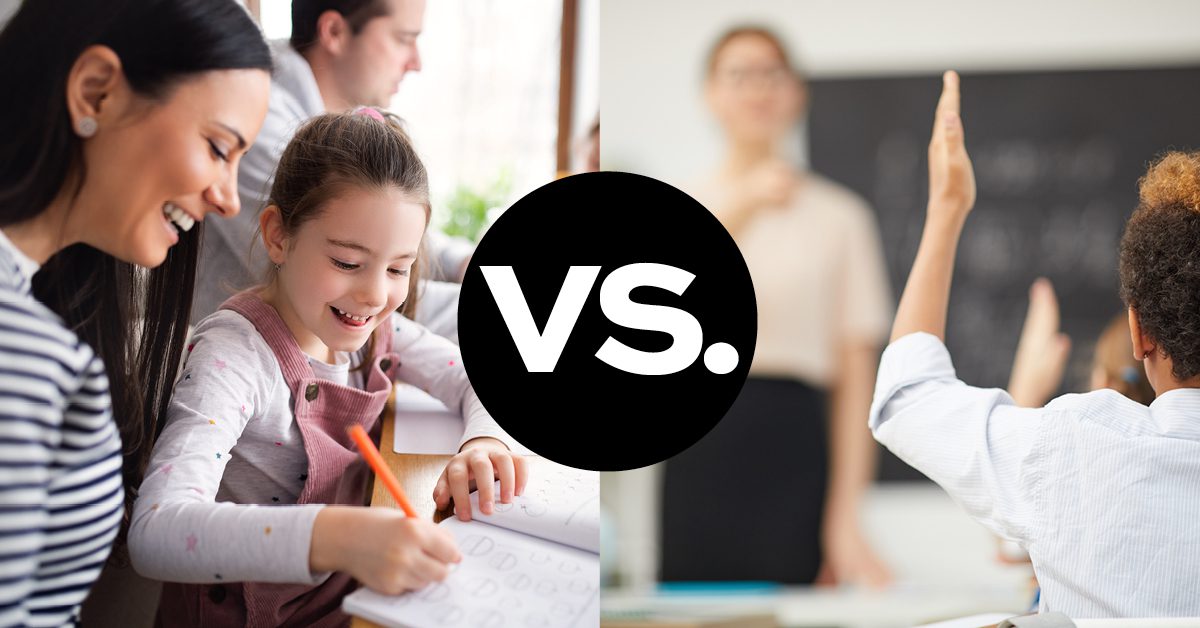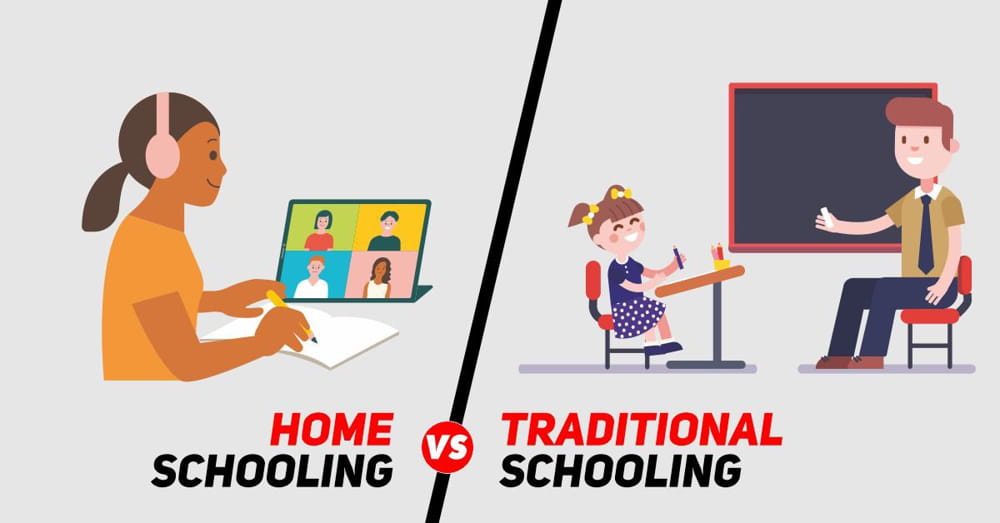
Introduction to Homeschooling and Traditional Schooling
The educational landscape has shifted dramatically in recent years, sparking a heated debate between two prominent options: homeschooling and traditional schooling. Parents are increasingly faced with the tough decision of which path to choose for their children’s education. With unique benefits and challenges, each option offers distinct experiences that can shape a child’s future.
Homeschooling is often lauded for its flexibility and personalized approach, while traditional schooling provides structure and social interaction. But what truly sets them apart? In this blog post, we’ll dive deep into the pros and cons of both educational methods, explore academic performance comparisons, discuss socialization aspects, evaluate costs involved, examine personalized learning opportunities, and highlight critical factors to consider when making this life-altering choice. Join us as we unpack the essential elements of homeschooling versus traditional schooling!

Pros and Cons of Homeschooling
Homeschooling offers flexibility that traditional schooling often cannot. Parents can tailor lessons to fit their child’s learning style and pace. This customization allows for deeper exploration of subjects that spark interest.
However, it demands significant time and commitment from parents. Balancing work and teaching can be challenging, leading to potential burnout.
Another advantage is a personalized learning environment free from distractions found in classrooms. Kids may thrive without the pressure of peer comparisons.
On the downside, homeschooled children might miss out on certain social interactions typical in traditional schools. Building friendships outside the home requires extra effort.
Additionally, resources for homeschooling can be limited compared to what traditional institutions provide. Access to lab equipment or specialized teachers isn’t always feasible at home, which could impact educational depth.
Pros and Cons of Traditional Schooling
Traditional schooling offers structure, which many parents appreciate. Students follow a set schedule that includes various subjects, allowing them to experience a well-rounded education.
Social interaction is another significant advantage. Classrooms are hubs of activity where students can form friendships and develop social skills through group projects and extracurricular activities.
On the flip side, traditional schooling may not cater to every child’s learning style. Some kids thrive in hands-on environments, while others need more individualized attention. This one-size-fits-all approach can leave certain students feeling disengaged.
Discipline is also an aspect worth mentioning. The school environment often enforces rules that help children learn about authority and responsibility. However, this rigidity can sometimes stifle creativity or critical thinking.
Additionally, logistical challenges arise for families with multiple commitments or those living far from good schools. Commutes and rigid schedules might create stress for both parents and students alike.

Academic Performance Comparison between Homeschooled and Traditionally Schooled Students
Research shows that academic performance varies between homeschooled and traditionally schooled students. Homeschooled students often excel in standardized tests, frequently scoring above average compared to their peers. This success can be attributed to personalized learning approaches tailored to individual strengths.
Traditionally schooled students benefit from a structured environment. They experience consistent schedules and access to various resources like libraries and laboratories. These factors contribute positively to their learning experiences.
However, the quality of education in traditional settings can vary significantly by school district, teacher effectiveness, and available programs. Some schools may not meet every child’s unique needs as effectively as homeschooling does.
Both methods have strong advocates who believe firmly in their benefits. The choice ultimately depends on family values, educational goals, and the specific needs of each child’s learning style.
Socialization in Homeschooling vs. Traditional Schooling
Socialization often raises questions when it comes to homeschooling versus traditional schooling. Many believe that kids in conventional schools have the upper hand due to daily interactions with peers.
However, homeschooled children can also thrive socially. They engage in community activities, sports teams, and co-ops that create ample opportunities for social interaction outside a classroom setting.
Traditional school environments foster friendships through structured settings where students spend hours together. This exposure can lead to strong bonds but may not always cater to individual personalities or learning styles.
Conversely, homeschooling allows parents to curate social experiences tailored specifically for their child’s interests and needs. Whether through playdates, clubs, or extracurriculars, these learners often develop meaningful relationships on their own terms.
Both educational paths offer varied social experiences that shape children’s development uniquely.

Cost Comparison between Homeschooling and Traditional Schooling
When considering the cost of education, homeschooling and traditional schooling present different financial landscapes.
Traditional schools often require tuition fees, uniforms, transportation costs, and various extracurricular expenses. These can add up quickly for families. Public schools might offer free education but still have associated costs like supplies and activities.
On the other hand, homeschooling involves direct costs related to curriculum materials, educational resources, and possibly online programs. While some parents may save on commuting or meals outside the home, they might also invest in workshops or co-op classes to enhance their children’s learning experience.
Many find that a well-planned homeschool budget can be more flexible than traditional school expenses. This allows families to prioritize what matters most in their child’s education without being bound by rigid financial structures set by institutions.
Personalized Learning: Homeschooling vs. Traditional Schooling
Personalized learning shines brightly in the realm of homeschooling. Parents can adapt lessons to fit their child’s unique interests and learning styles. This flexibility fosters a deeper understanding and encourages curiosity.
In traditional schooling, the one-size-fits-all approach often prevails. Teachers juggle diverse needs within a classroom, which can dilute individual attention. While some schools implement differentiated instruction, it rarely matches the tailored experiences available through homeschooling.
Moreover, with homeschool curriculums readily customizable, students explore subjects at their own pace. Struggling with math? Extra time is easily arranged. Thriving in science? Dive deeper without waiting for classmates to catch up.
Traditional settings may offer resources like labs or extracurricular activities that enhance learning but can’t replicate that level of personalization intrinsic to homeschooling’s structure and philosophy. Each method has its strengths, yet personalized education remains a hallmark of the home-based model.
Making the Decision: Factors to Consider when Choosing Between
Making the decision between homeschooling and traditional schooling is not one-size-fits-all. Your family’s priorities, values, and circumstances play a significant role in this choice.
First, consider your child’s learning style. Some children thrive in structured environments with clear guidelines and peer interactions typical of traditional schools. Others may excel with personalized attention that homeschooling offers.
Think about socialization opportunities as well. While homeschooled children can engage in extracurricular activities outside their home environment, traditionally schooled kids interact daily with diverse peers.
Cost is another important factor. Homeschooling often involves purchasing educational materials, while traditional schooling may have tuition fees or other expenses to consider depending on the institution you choose.

Examine your capability to commit time for teaching if you opt for homeschooling. This path demands significant dedication from parents or guardians who need to manage lesson planning and execution effectively.
Assess your local education laws regarding homeschooling versus enrollment requirements at public or private schools. Understanding these regulations will help guide your choice based on feasibility and adherence to legal standards.
Both paths offer unique advantages and challenges; weighing them carefully against your family’s needs will lead you toward the right decision for your child’s education journey.



Leave a Reply